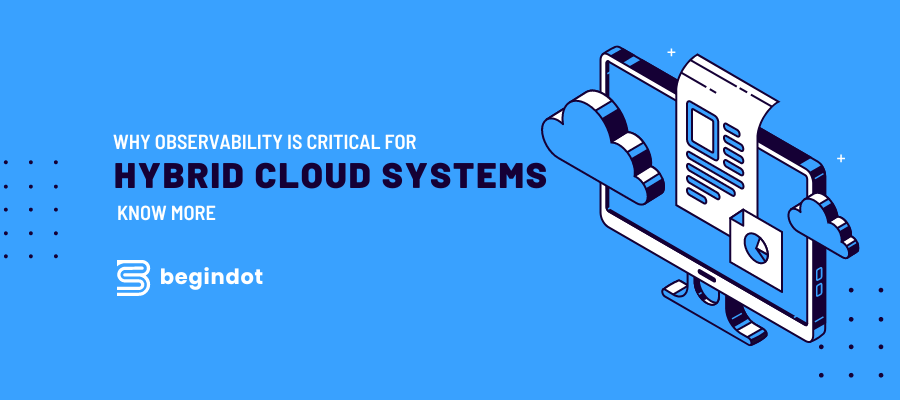If you’ve got a hybrid cloud setup already in place, or you’re planning on migrating to one in the near future, you need to get to grips with the role of observability in this scenario.
Let’s dissect this in detail, covering the key things you need to know, and exploring how you can optimize your use of your own cloud assets as a result.

Understanding the Benefits of Observability for Hybrid Cloud Systems
In essence, modern observability tools offer businesses an effective way to monitor and manage both their on-premise computing capacity and public/private clouds from one central location.
Not only does observability provide insight into performance metrics such as latency, throughput, availability, and scalability, but it also monitors user behavior in real-time.
This allows teams to proactively identify any potential issues before they become major problems that can impact end-user experience or cost money due to downtime or increased workloads needed for resolution.
In addition, observability helps increase efficiency by providing visibility across all components of the system. This facilitates faster issue resolution times, leading to better uptime levels and improved application reliability and stability in the long term.
How to Monitor Multiple Clouds with a Single Tool
Harnessing a solution that offers total observability of hybrid cloud systems makes sense for all of the aforementioned reasons, and there are plenty of options out there today which can do just that.
The key is to find a tool that caters to your specific needs; for instance, you might want granular monitoring and control over individual apps running on your hybrid cloud setup, in which case this should be on your list of priorities.
Automation is also appealing, as you don’t want to have your team be responsible for manually looking out for issues. Instead, a tool that can scan for anomalies and fire off alerts to ensure troubleshooting takes place in a timely manner is worth investing in.
The Importance of Automating Performance Monitoring in Hybrid Environments
Speaking of automation, there’s a lot more to this aspect of overseeing hybrid cloud configurations. For instance, automation provides the scalability needed for more complex environments where manual processes are not able to keep pace with growth or changing requirements.
This allows teams to take proactive steps towards improving uptime levels while controlling costs by efficiently managing resources across multiple clouds from one location—all without needing extra manpower or time-consuming manual processes.
Your business can therefore grow and evolve unhindered, rather than being weighed down by an infrastructure that’s no longer able to serve its needs.
Observability also helps ensure consistency when deploying applications, as it increases visibility into user behavior, which improves overall agility and efficiency over time.
Improving Efficiency and Agility Through Proactive Management of Issues
It’s worth talking a little more about the part played by observability in taking proactive steps towards improving efficiency and agility.
As mentioned, by leveraging visibility into user behavior in real-time, teams can identify any potential flaws as soon as possible.
In doing so, organizations can become far more agile, adapting to changes that are outside of their control and rolling with the punches when deploying, upgrading or migrating individual apps or entire infrastructures.
The fact that all of this is achievable without adding to administrative costs is further evidence that observability is completely crucial for any type of cloud system, as well as more traditional on-site hardware and software arrays.
The Future of Hybrid Cloud Observability
With the rising complexity of hybrid cloud environments, observability tools are set to become the core of many modern IT operations.
Of course, there’s still the possibility that we’ll eventually see a complete end to the age of on-site IT, with every service, from AI security to customer-facing solutions, delivered over a network connection and hosted at a remote data center.
But even if this comes to pass, observability will still be necessary so that businesses can manage and control their resources without being entirely reliant on third parties.
Wrapping Up
Just because the cloud is ubiquitous, doesn’t mean businesses can afford to take it for granted. Observability lets organizations large and small alike take the wheel of complex systems and get more out of them, so deserves your attention in spades.









